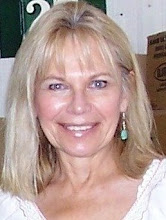1.) In documents, Żermony, town on an unnamed tributary of the Dzitwa (River), Lida district, in the 1st police precinct, Żyrmuny gmina and rural precinct, at 54 degrees 1 minute north latitude and 42 degrees 53 minutes east longitude, at a distance of 14 wiorsts on the north-north-west from Lida, 75 wiorsts from Wilno by the post road from Lida to Wilno.
In the year 1860, had 29 houses, 271 inhabitants (according to later data, 14 houses, 196 residents), gmina and police precinct administration, Catholic parish church, Jewish house of prayer, public school, asylum for the poor, postal station. Catholic parish church, by the name Holy Cross, was built of wood in 1788 through Princess Karolina Radziwiłł. Catholic parish, Lida deanery, 2,491 faithful.
In the parish, the area is elevated; sandy soil, stony and gravelly, small forests, many bushes and marshes. Irrigating are the Rivers Żyżma, Dzitwa, and Nieszkrup. Within the composition of the rural precinct come the town of Żyrmuny; the villages Bojary, Gierwieniki, Kawieryki, Maguny, Mnichy, Orzeliszki, Piatkowszczyzna, Pliki, Podworzance, Pożyżma, Skowrody, Stuki, Szalcinie, Szawerdaki, Tatary, Tołkinie, and Wielkie Sioło; zaścianek Jaświły; and szlachta neighborhood Soroki. All in all, in the year 1865, 423 “revision souls” [who were] enfranchised peasants, 1,616 treasury peasants, and 3 jednodworce.
The gmina belongs to the 4th rural precinct (starostwo) (Żyrmuny, Apolin, Dworzyszcze, and Grodzienka), taking in 69 localities, having 445 houses, 5,910 peasant inhabitants enfranchised on 8,619 desyatins (6,311 fields). Furthermore, within the limits of the gmina there are 19,615 desyatins (6,651 fields) in larger estates/properties and 63 (39 fields) church/ecclesiastical lands. In the year 1865, there were in the gmina 1,412 “revision souls” who were enfranchised peasants, 356 who were treasury peasants, and 104 jednodworce.
Formerly the property of Zawisza, among whom Jan, the wojewód of Witebsk, built a wooden parish church here, dedicated to the Blessed Virgin Mary, and in the year 1624 endowed it generously. In place of this church, which apparently burned during a war with Czar Aleksy Michajłowicz [Romanow], a new one was built in 1673, the endeavor of the local curate Reverend Maciej Szarkiewicz.
In the first years of the 18th century, Żyrmuny went to the possession of ks. Radziwiłł through the marriage of Mikołaj Faustyn Radziwiłł with Barbara Zawiszanka (born 1690), the daughter of Krzysztof Zawisza, governor of Minsk. The son of this Faustyn, Stanisław Radziwiłł, carver of the king’s meat for the Grand Duke of Lithuania (Wielkie Księztwo Litewskie), together with his wife, Karolina nee Pocieja, built, in place of the deteriorating one, a magnificent new wooden church.
In the Acts of the Diocese of Wilno (Book IV, 1643) is preserved a curious act, in which “Aleksa Tyszkiewiczówna, wife of the Witebsk castellan Zawisza,” together with close friends, confirmed that for the church in Żyrmuny she was offering drops of Christ’s blood, obtained in Rome from Urban VIII through ks. Tyszkiewicz, formerly the bishop of Wilno, brother of the donor. The act was written 20 March 1667 “in Żermony.” According to a visit in the year 1700, this relic is placed in the pacyfikał [a reliquary], preserved in the church ciborium.
August II in the year 1724 gave Żyrmuny municipal rights. In more recent times, Żyrmuny belonged to Count Tyszkiewicz, later to Anna Szwanbach.
2.) Private folwark on the Nieszkrup stream, Lida district, in the 1st police precinct, Żyrmuny gmina (at 4 wiorsts from Żyrmuny), at 14 wiorsts from Lida, 54 inhabitants, water mill, distillery, and soap factory. — J. Krz.
(Słownik, v. XIV, p. 895-6)
Subscribe to:
Post Comments (Atom)










No comments:
Post a Comment